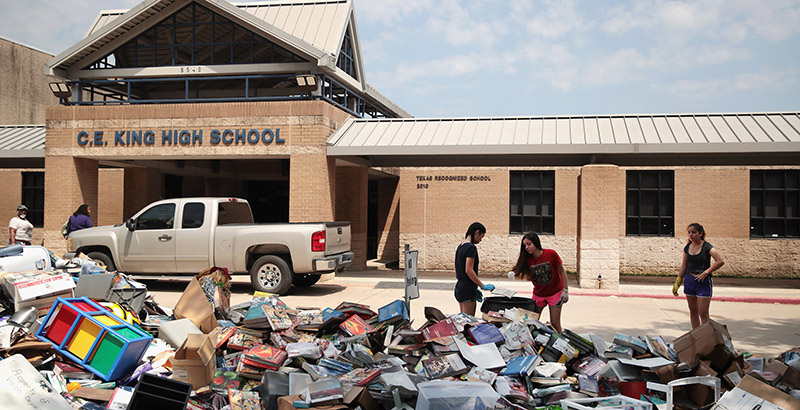Ed Dept. Creates Dedicated Disaster Response Team to Manage Federal Aid to Schools Amid Increased Hurricanes, Wildfires and Floods

The U.S. Department of Education is creating a dedicated team to help schools prepare for and recover from natural disasters.
This would put the department in line with other federal agencies that already have full-time dedicated staff in place to deal with disaster and recovery efforts, said Frank Brogan, assistant secretary for elementary and secondary education.
“We have to be proactive and not wait to play catch-up. One of the reasons we’ve established the disaster response unit is to keep pace full time with the growing number of recognized natural disasters and dealing with the appropriations we’ve received from Congress and do the most good,” he told a House Education subcommittee at a hearing Tuesday.
The hearing comes amid a series of natural disasters that have affected schools across the country in the past few years, including hurricanes, wildfires, tornadoes, floods and typhoons. After lengthy delays, Congress earlier this week passed a $19 billion aid bill that includes $165 million in education funds. The department will create a plan for spending that additional aid within 30 days of President Trump signing the bill, as required in the law, Brogan said.
That bill is on top of an aid package passed last year, which gave $2.7 billion for education-related disaster relief, including funds for school districts that took in displaced students after hurricanes in Puerto Rico, the Virgin Islands and Texas, as well as wildfires in California, during the 2017-18 school year.
Although no one in the department had been working on disaster issues full time, a count of the time spent on it by all employees quickly surpassed 20,000 hours, Brogan added.
The five-person disaster response unit will help coordinate with the Federal Emergency Management Agency and other federal agencies, as well as with state and local officials, he said. Department officials also hope to use the office, in conjunction with researchers, to examine long-term academic impacts of disasters, Brogan said.
A second panel at the hearing with school and union leaders from the Northern Mariana Islands, the Virgin Islands, Florida and California focused on ongoing problems with disaster recovery and lessons learned from previous responses.
In Florida, for example, state leaders learned that school officials need one point of contact at the state department to address disaster recovery. Principals and districts also aren’t used to working with some of the more unique forms of outside assistance that often accompany the aftermath of a natural disaster, such as the National Guard, former commissioner John Winn told the subcommittee.
California officials, meanwhile, realized that schools often aren’t properly included in city- and county-wide disaster planning, said Steve Herrington, superintendent in Sonoma County.
Several officials described ongoing student mental health problems. Some students experienced symptoms of post-traumatic stress disorder when strong storms raged again recently in the Virgin Islands, or when ash from other wildfires in California fell in areas that had previously faced them.
Get stories like these delivered straight to your inbox. Sign up for The 74 Newsletter

;)
